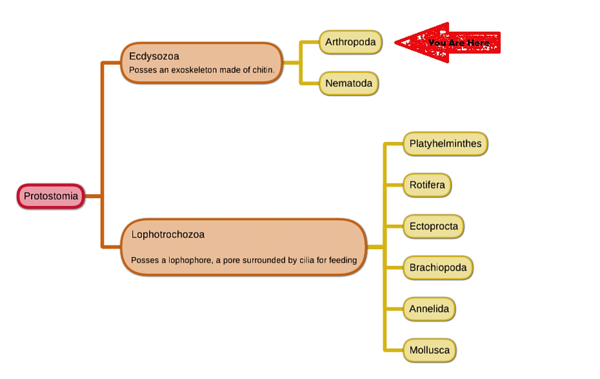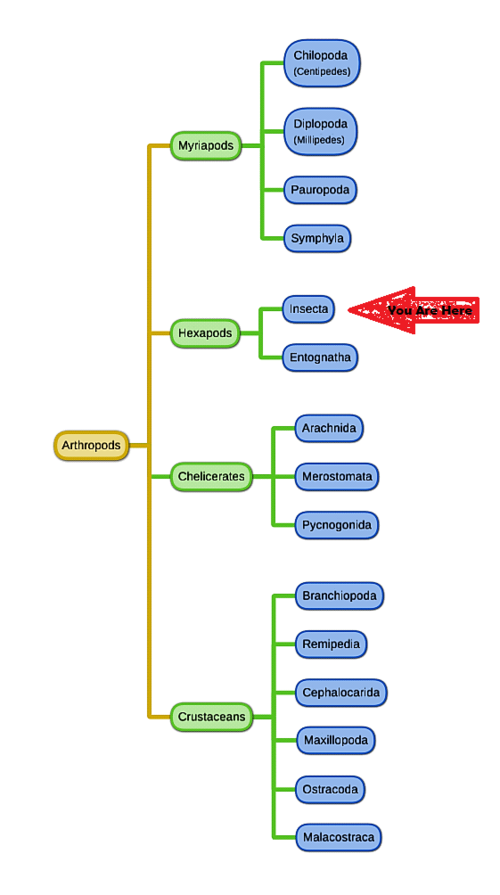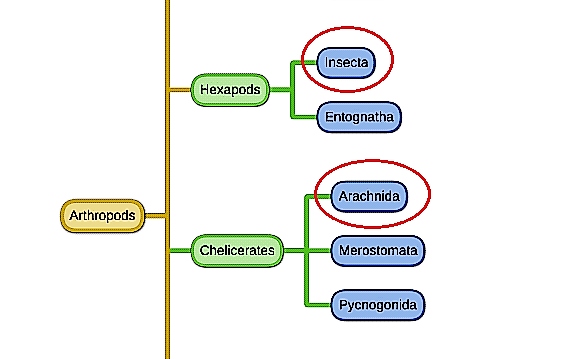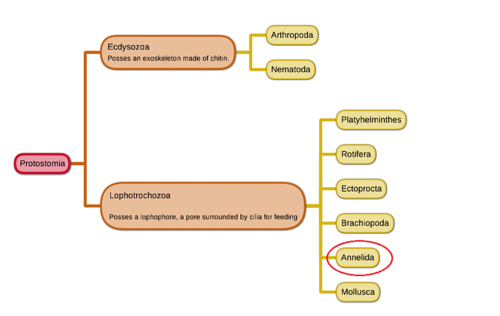Insects
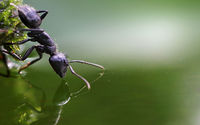
Entomology, The Study of Insects
Entomology is the study of insects and their relationship to humans, the environment and other organisms ([1] Entomology Department, WSU.) Entomologist provide a diverse range of services to many different occupations. For example, forensic entomologists, a specific branch of entomology, would work to better understand a criminal case, such contributing to solving a murder by figuring out the type of insects that are decomposing the remains. This may provide insight to how long a body has been decomposing or if the remains were moved.
Entomology is a part of the study of ecology and human geography and it can also be used as indicators of environmental shifts or changes. Insects are important to a forests biodiversity and slight climate shifts can cause damages to an ecosystem. For example, an invasive species of insect can be introduced to an ecosystem due to a shift in climate and this can cause flora to disappear. Also, entomology can be used in studying specific types of flora to an ecosystem, which may help to better understand the type of insects within a region. An example of this would any pollinating insects.
Entomology is used in many fields and can be used to better understand areas of study such as terrestrial ecology and essential ecosystem services.
What Are Insects?
Insects have many benefits within terrestrial ecology. They work in providing essential ecosystem services. For example, honey bee's, moths, and butterfly's all work to pollinate. Essential ecosystem services like pollination, need these insects. Pollination is vital to an ecosystem because the process works in providing a source of food for other animals and for humans, providing coffee is dependent on pollinators. Without insects, there would be a missing link to an ecosystem's food chain and to ecosystem services that are vital to life. File:Https://youtu.be/F0KazWsKCPI.ogg
Insects fall under the phylum of "Arthropoda" or Arthropods, a class of invertebrates. Arthropods have jointed appendages, evidencing them to be unique from other animals and phylum. More specifically, Insects or "Insecta" belong to the sub-phylum of Hexapods and as "Insecta," they are set apart from other Hexapods by the characterization of having wings. Insects can be identified through their segmented bodies and these segments can be referred to as "tagmata." Insecta posses other particular characteristics that set them apart from other animals like paired segmented appendages, bilateral symmetry or their bodies are symmetrical, and an external skeleton that are molted during the process of new growth.
The Difference Between Insects, Spiders, And Earthworms
Spiders and Earthworms often are mistaken for insects. To begin, spiders are arachnids and earthworms are annelids. The charts below illustrate that Insects, Arachnids and Annelids are categorized within different sub-phylum. Insects belong to hexapoda, which belong to arthropoda. While spiders or arachnids, belong to chelicerates who also belong to Arthropoda. Although Insects and Arachnids are both Arthropods, they are categorized within a different sub-phylum. Earthworms belong to the phylum Annelida or Annelids and unlike Arachnids or Insects, are lophotrochozoa.
Annelids and Arthropods can be distinctly recognized by a few characteristics that set them apart from each other. First, they are from different groups. The charts above show Annelids and Arthropods as apart from each other because Annelids are lophotrochozoa while Arthropods are Ecdysozoa. Second, Lophotrochozoa have a pore that is surrounded by cilia, this is used for feeding and can be referred to as a "lophophore." While Ecdysozoa have an exoskeleton made of "chitin," that they are able to shed for new growth. Lastly, Insects have three body segments, legs and antennae while annelids have no legs nor antennae but possess many body segments. These major characteristics differentiate Annelids and Arthropods and evidences that, Earthworms are not insects.
Understanding that Annelids and Arthropods are different from each other is easy, because earthworms, flatworms and the various species within Annelida don't have legs, where as insects have legs and wings. The characteristics in the paragraph above illustrate there are more unique distinctions that make up differences in animals that the average person sees but is not aware of.
Arachnids and Insects are both classified as "Arthropoda" and have distinct characteristics that categorize them within different sub-phylum. One can categorize them through their morphology or form. Basic morphology from the University of Nebraska shows that Insects have a head, a thorax, and an abdomen. A spider has an abdomen and a Cephalothorax. A cephalothoarx is a combination of both a head and a thorax.
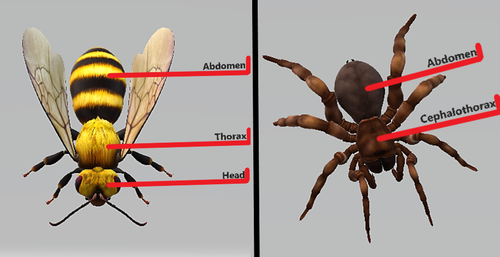
References
[1] Washington State University, Entomology Department. "The What and Why of Entomology." http://entomology.wsu.edu/prospective-students/the-what-why-of-entomology/
[2] Mason, Mathew. "Entomology 101: Study of Insects." https://www.environmentalscience.org/entomology
[3] Byrd, J. H. copyright 1998-2018. "Forensic Entomology." http://www.forensic-entomology.com/definition/
[4] Harper, Douglas. Copyright 2001-2018 "Arthropoda (n.)" https://www.etymonline.com/word/Arthropoda
[5] U.S. Fish and Wildlife Service. 2018. March, 19. "Celebrate National Pollinator Week this June 18-24, 2018" https://www.fws.gov/pollinators/
[6] Regier, Jerome C., et al. Nature, vol. 463, no. 7284, 2010, p. 1079+. Science In Context "Arthropod relationships revealed by phylogenomic analysis of nuclear protein-coding sequences." http://link.galegroup.com/apps/doc/A220411567/SCIC?u=sunybuff_main&sid=SCIC&xid=6050f26c.
[7] Hernandez, Ortega Javier. 2014. December, 21. "Making Sense of 'Lower' and 'Upper' Stem-Group Euarthropoda, With Comments on the Strict Use of the Name Arthropoda von Siebold, 1848." https://www.academia.edu/9363838/Making_sense_of_lower_and_upper_stem-group_Euarthropoda_with_comments_on_the_strict_use_of_the_name_Arthropoda_von_Siebold_1848
[8] University at Nebraska. 2018 "Basic Insect Morphology." https://entomology.unl.edu/scilit/basic-insect-morphology
[9] University at Nebraska. 2018 "What is an Insect." https://entomology.unl.edu/scilit/what-insect
Picture References
[1] Trunov ,Vadim. 2012. Aug, 7. "Beautiful Macro Photos of Snails and Insects in the Rain." http://amazing-creature.blogspot.com/2012/08/beautiful-macro-photographs-of-snails.html#.Wrha3IjwbIU DONOT USE This picture. Google search title for actual insects."
